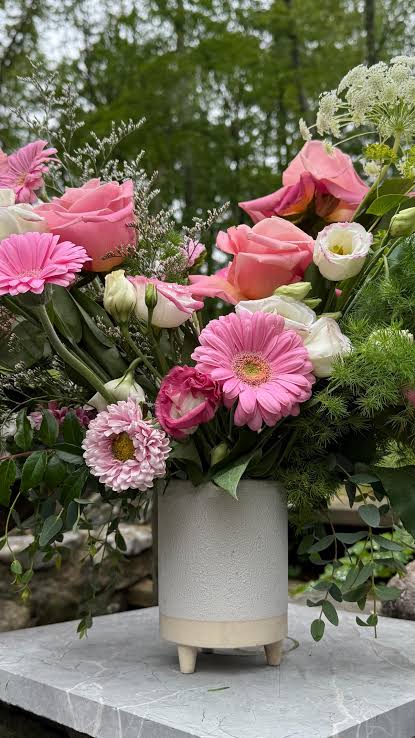Japanese gardens are world-famous for their elegance, balance, and natural beauty. At the heart of these landscapes lie the flowers—delicate, symbolic, and deeply tied to cultural traditions. From cherry blossoms that blanket Japan in spring to chrysanthemums celebrated in national festivals, Japanese flowers embody harmony, spirituality, and seasonal change.But you don’t need to live in Tokyo or Kyoto to enjoy their beauty. With the right choices, anyone in the United States, United Kingdom, or Canada can incorporate Japanese blooms into home gardens, patios, or floral arrangements. This guide explores 👌 so simple, so clever: Japanese flowers done right!, offering insights into popular varieties, cultural meanings, design ideas, and practical gardening tips.The Cultural Significance of Japanese FlowersFlowers in Japan are not just decorative—they’re part of art, literature, and daily life. Known as hanakotoba (the language of flowers), blooms carry symbolic meanings that influence garden design, gift-giving, and seasonal celebrations.Cherry Blossom (Sakura): Symbolizes the fleeting nature of life and new beginnings.Chrysanthemum (Kiku): Represents longevity and rejuvenation; also Japan’s imperial flower.Lotus (Hasu): Associated with purity and enlightenment in Buddhist traditions.Camellia (Tsubaki): A winter bloom representing elegance and strength.Understanding these meanings is the first step in mastering 👌 so simple, so clever: Japanese flowers done right!Popular Japanese Flowers for Your GardenCherry Blossoms (Sakura)Perhaps the most iconic of all Japanese flowers, cherry blossoms create breathtaking spring displays. While full-sized cherry trees may be challenging in smaller gardens, dwarf varieties or ornamental cherries work beautifully in U.S., U.K., and Canadian climates.Chrysanthemums (Kiku)A staple in Japanese gardens, chrysanthemums are hardy and come in countless colors. They bloom in late summer and autumn, making them perfect for extending seasonal color.Azaleas (Tsutsuji)Bright and colorful, azaleas bring vibrancy to spring gardens. They thrive in acidic soil and look stunning in borders or as container plants.Wisteria (Fuji)Famous for their cascading purple blooms, wisterias are ideal for trellises or pergolas. They provide dramatic flair and are especially popular in U.K. gardens.Irises (Ayame)Irises are admired for their elegant petals and striking hues. In Japan, they’re often grown near water features—an idea you can replicate in backyard ponds.Camellias (Tsubaki)These evergreen shrubs provide glossy leaves and vibrant flowers in cooler months. They’re a stylish choice for shaded areas in Canadian and U.K. gardens.Incorporating Japanese Flowers into Garden DesignMinimalist Zen GardensPair flowers like irises or camellias with gravel, stones, and bamboo for a serene aesthetic. Keep designs simple and symmetrical, focusing on balance.Seasonal DisplaysJapanese culture emphasizes the seasons. Plant cherry blossoms for spring, chrysanthemums for autumn, and camellias for winter interest. This rotation creates year-round beauty.Water-Inspired LayoutsLotus flowers and irises thrive near water. Incorporating a pond or fountain allows you to practice 👌 so simple, so clever: Japanese flowers done right! while attracting wildlife.Pathways and BordersUse azaleas or wisteria to frame pathways and entrances. Their bursts of color add drama while maintaining harmony with surrounding greenery.Practical Tips for Growing Japanese FlowersClimate ConsiderationsUnited States: Southern states can host wisteria and camellias, while northern regions suit chrysanthemums and azaleas.United Kingdom: Mild, moist conditions favor cherry blossoms and wisteria.Canada: Hardy varieties of chrysanthemums, irises, and dwarf cherries adapt well to colder climates.Soil PreparationMost Japanese flowers prefer well-draining, slightly acidic soil. Incorporating organic matter like compost improves fertility and moisture retention.Sunlight NeedsCherry blossoms and wisteria need full sun.Azaleas and camellias thrive in partial shade.Chrysanthemums prefer sunny spots for abundant blooms.Watering and MaintenanceKeep soil moist but avoid waterlogging.Prune wisteria annually to control growth.Deadhead chrysanthemums to encourage longer flowering.By following these steps, you’ll achieve 👌 so simple, so clever: Japanese flowers done right! in your very own garden.Creative Uses Beyond the GardenIkebana (Japanese Flower Arranging)Ikebana emphasizes simplicity, asymmetry, and natural flow. Incorporating Japanese flowers into this art form can bring elegance into your home.Seasonal Festivals at HomeRecreate Japan’s seasonal celebrations by hosting a “sakura viewing” picnic under cherry blossoms or decorating with chrysanthemums in autumn.Floral GiftsCherry blossoms symbolize renewal, making them perfect for springtime gifts. Camellias or chrysanthemums convey strength and longevity.Indoor DisplaysCamellias and irises make stunning cut flowers for indoor arrangements, adding sophistication to your living space.Common Mistakes to AvoidPlanting without planning: Japanese flowers often need space and proper placement to thrive.Overcrowding borders: Simplicity is key in Japanese design—avoid mixing too many species.Ignoring cultural symbolism: Choosing flowers with clashing meanings can disrupt harmony in traditional arrangements.Skipping maintenance: Wisterias, in particular, require regular pruning to stay controlled.Avoiding these errors ensures your effort at 👌 so simple, so clever: Japanese flowers done right! pays off beautifully.Why Japanese Flowers Work EverywhereWhat makes Japanese flowers universally appealing is their blend of beauty and meaning. They’re adaptable across climates, enrich gardens with color, and bring cultural depth. Whether you live in a suburban American home, a cozy British cottage, or a Canadian city apartment with a balcony garden, these flowers can be tailored to fit your space.They represent the perfect mix of style and substance—exactly what 👌 so simple, so clever: Japanese flowers done right! is all about.ConclusionJapanese flowers are more than plants—they’re living symbols of beauty, tradition, and mindfulness. By choosing the right varieties, incorporating seasonal displays, and respecting cultural significance, you can create a garden that feels balanced and inspiring.From cherry blossoms in spring to camellias in winter, these blooms bring elegance year-round. Whether you’re designing a Zen garden, practicing Ikebana, or simply adding color to your yard, Japanese flowers make it possible to enjoy nature in its most refined form.So, if you’re ready to elevate your outdoor space with a touch of timeless charm, start experimenting today with 👌 so simple, so clever: Japanese flowers done right!

